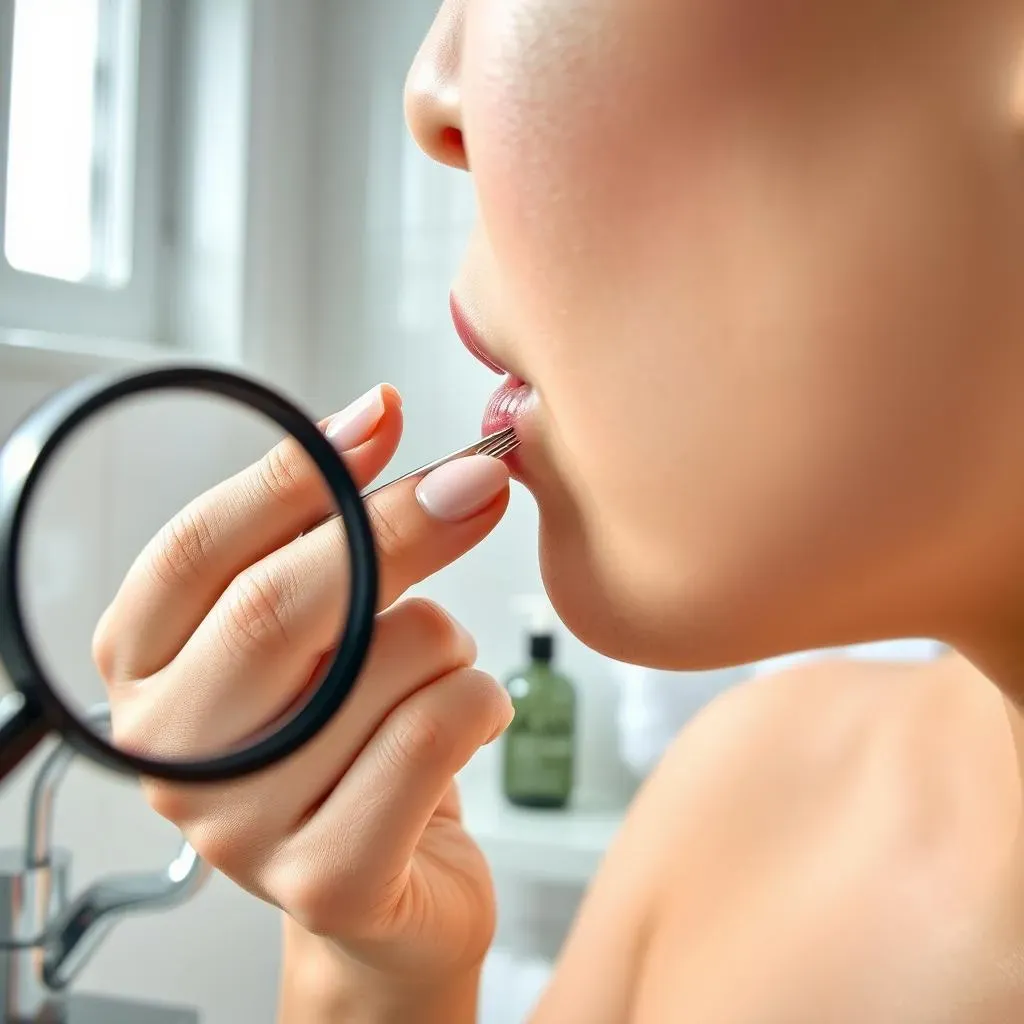Table of Contents
Are you tired of dealing with the discomfort and embarrassment of ingrown hairs? Do you find yourself scouring the internet for satisfying removing ingrown hairs videos that provide effective solutions? Look no further! This comprehensive guide is designed to walk you through the process of removing ingrown hairs, from understanding the causes and symptoms to exploring professional techniques and home remedies. With the help of removing ingrown hairs videos, you'll learn how to extract ingrown hairs safely and effectively. Whether you're struggling with ingrown hairs on your face, neck, or body, this article will provide you with the knowledge and confidence to take control of your skin. So, let's dive in and explore the world of ingrown hair removal, discovering the best methods and practices to achieve smooth, healthy-looking skin.
Understanding Ingrown Hairs: Causes, Symptoms, and Prevention
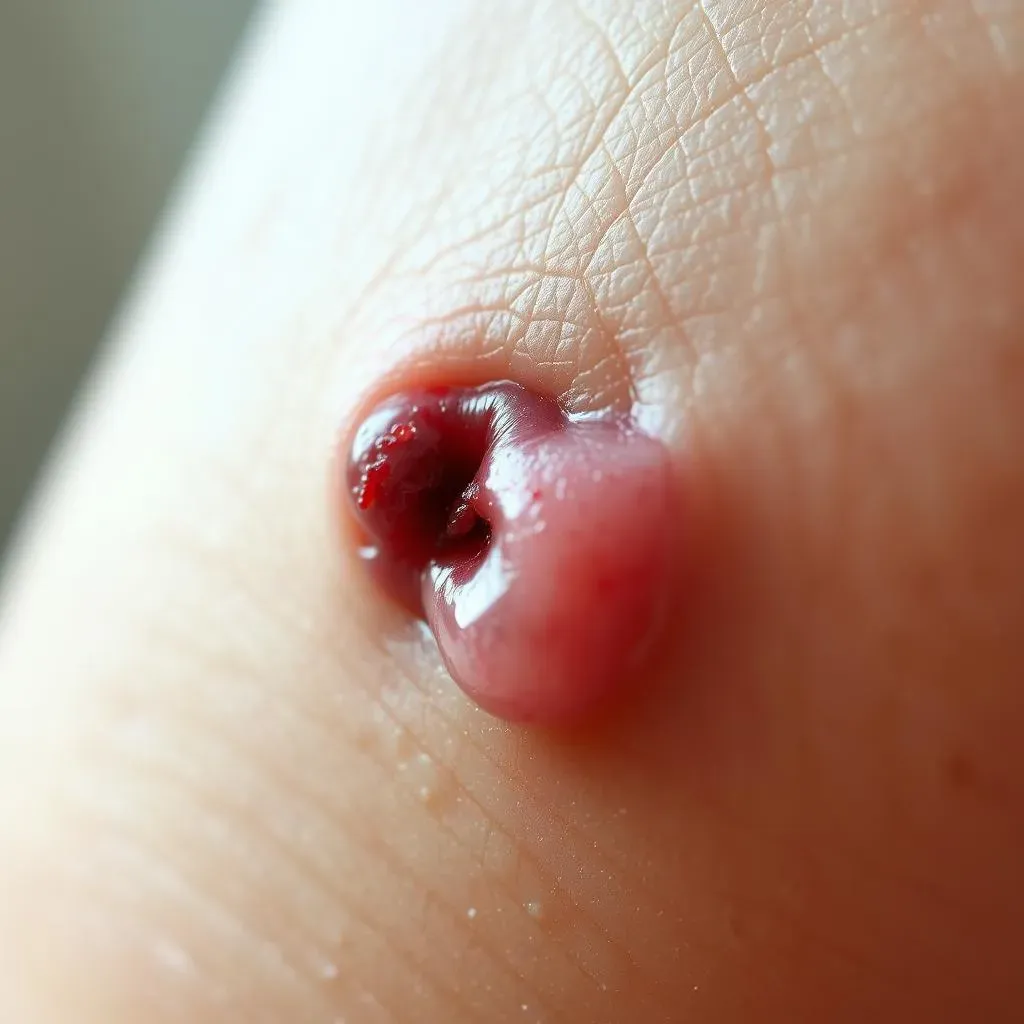
Understanding Ingrown Hairs: Causes, Symptoms, and Prevention
What are Ingrown Hairs and How Do They Form?
Ingrown hairs occur when hair grows back into the skin instead of outward, causing inflammation, redness, and sometimes infection. This can happen due to various factors such as improper shaving techniques, tight clothing, and curly or coarse hair. Understanding the causes of ingrown hairs is crucial in preventing them from forming in the first place.
Some common causes of ingrown hairs include:
- Shaving too closely, which can cause the hair to become trapped beneath the skin
- Wearing tight clothing that rubs against the skin, encouraging the hair to grow back into the skin
- Having curly or coarse hair, which is more prone to becoming ingrown
- Poor hygiene and not exfoliating the skin regularly, leading to clogged pores and trapped hair
Cause | Solution | Prevention Tip |
|---|---|---|
Improper shaving | Exfoliate before shaving, use a sharp razor, and shave in the direction of hair growth | Avoid shaving over the same spot multiple times |
Tight clothing | Wear loose, breathable clothing | Avoid tight underwear and pants |
Curly or coarse hair | Use a warm compress to help loosen the hair, then gently coax it out with tweezers | Consider using a hair removal cream or waxing |
Symptoms and Prevention Methods
Ingrown hairs can cause a range of symptoms, from mild discomfort to severe pain and infection. It's essential to recognize the signs of an ingrown hair early on to prevent further complications.
Common symptoms include:
- Redness and inflammation around the affected area
- Pus or discharge
- Pain or tenderness
- A small bump or cyst
To prevent ingrown hairs from forming, it's crucial to maintain good hygiene and exfoliate regularly. Exfoliating helps remove dead skin cells and other debris that can clog pores and trap hair. Additionally, using a gentle shaving cream and shaving in the direction of hair growth can also help reduce the risk of ingrown hairs.
Symptom | Treatment | Prevention Method |
|---|---|---|
Redness and inflammation | Apply a warm compress, use topical creams or ointments | Exfoliate regularly, avoid tight clothing |
Pus or discharge | Apply antibiotic ointment, see a doctor if it persists | Practice good hygiene, avoid sharing razors |
Pain or tenderness | Take over-the-counter pain medication, apply a cold compress | Avoid shaving over the affected area, use a gentle touch |
Removing Ingrown Hairs Videos: Tips and Tricks for Successful Extraction
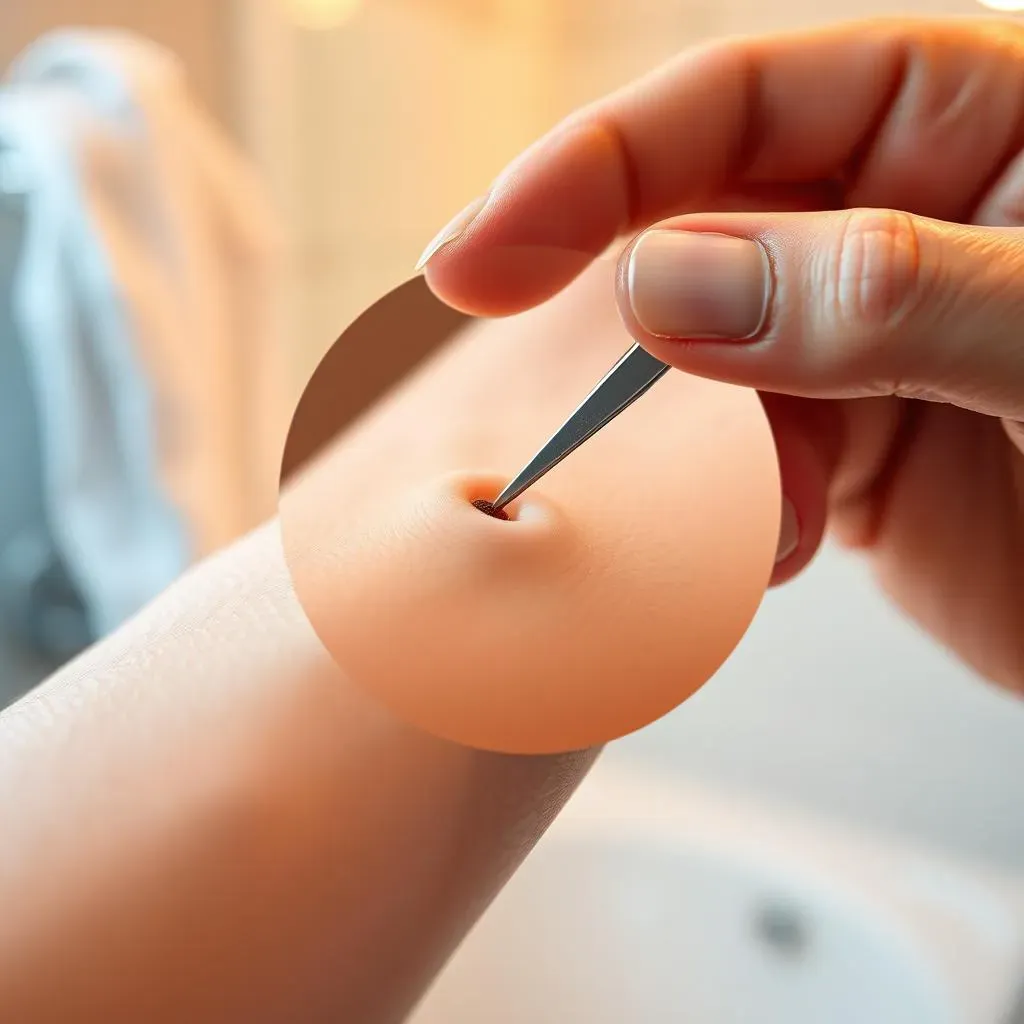
Removing Ingrown Hairs Videos: Tips and Tricks for Successful Extraction
Preparing for Ingrown Hair Removal
Before attempting to remove an ingrown hair, it's essential to prepare the skin and the hair follicle. This involves exfoliating the skin to remove dead skin cells and other debris that may be trapping the hair. You can use a gentle exfoliating scrub or a chemical exfoliant containing alpha-hydroxy acids (AHAs) or beta-hydroxy acids (BHAs). Exfoliating will help to unclog the pore and allow the ingrown hair to exit the skin more easily.
Another crucial step is to soften the skin and hair. Soaking the affected area in warm water can help to relax the hair follicle and make the hair easier to remove. You can also apply a warm compress to the area for a few minutes to loosen the hair. Additionally, using a hair removal cream or wax can help to reduce the hair's grip on the skin, making it simpler to extract.
Preparation Method | Benefits | Tips |
|---|---|---|
Exfoliation | Unclogs pores, reduces inflammation | Use a gentle scrub 1-2 times a week |
Warm compress | Loosens hair, relaxes follicle | Apply for 5-10 minutes, 2-3 times a day |
Hair removal cream or wax | Reduces hair grip, makes extraction easier | Follow instructions carefully, test on a small area first |
Extracting the Ingrown Hair
Once the skin is prepared, it's time to extract the ingrown hair. This can be done using tweezers, but it's essential to approach with caution to avoid causing further irritation or pushing the hair deeper into the skin. Start by cleaning the area with an antiseptic solution to prevent infection. Then, gently grasp the hair with the tweezers as close to the skin as possible. Pull the hair out in the direction of growth, avoiding any twisting or jerking motions.
Alternatively, you can use a sterile needle or lancet to carefully pierce the skin and release the ingrown hair. However, this method should be used with caution and only when the hair is particularly stubborn. It's also crucial to follow proper aftercare to prevent infection and promote healing.
- Always clean the area before extraction
- Use tweezers to pull the hair out in the direction of growth
- Avoid using force, which can cause the hair to break and leave remnants behind
- Apply an antibiotic ointment after extraction to prevent infection
Ingrown Hair Removal Methods: Exploring Professional Techniques and Home Remedies
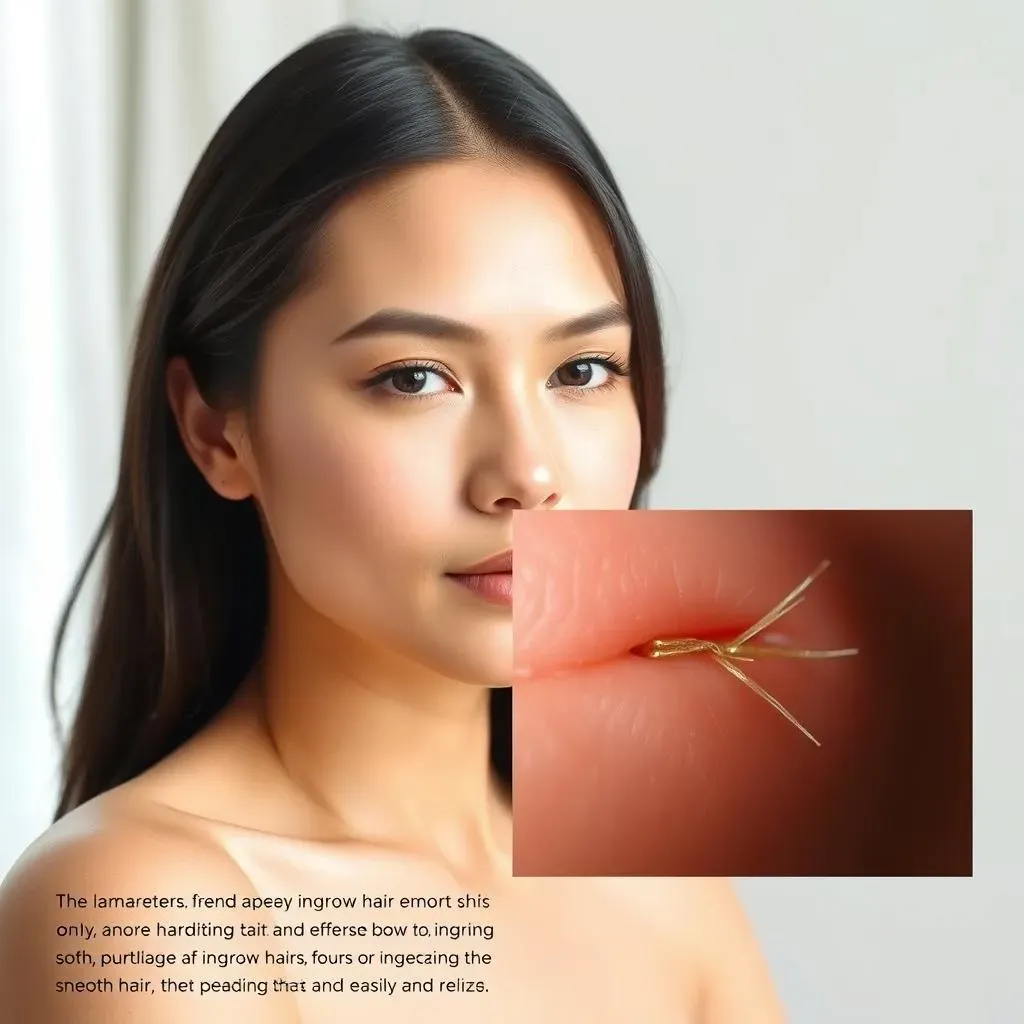
Ingrown Hair Removal Methods: Exploring Professional Techniques and Home Remedies
Professional Techniques for Ingrown Hair Removal
For those who prefer to seek professional help, there are several techniques available for ingrown hair removal. One common method is electrolysis, which uses a fine needle to insert a small amount of electricity into the hair follicle, damaging it and preventing future hair growth. Another option is laser hair removal, which uses a laser to target and destroy the hair follicle. This method is particularly effective for those with darker hair and lighter skin.
Other professional techniques include waxing and sugaring, which remove hair from the root, reducing the likelihood of ingrown hairs. Threading is another method that uses a thread to pull hair out from the follicle, which can be effective for sensitive areas. Additionally, depilatory creams can be used to dissolve hair at the surface of the skin, but this method may not be as effective for coarse or curly hair.
Method | Benefits | Risks |
|---|---|---|
Electrolysis | Permanent hair removal, effective for most skin types | Painful, requires multiple sessions |
Laser Hair Removal | Permanent hair reduction, faster than electrolysis | Expensive, may require multiple sessions |
Waxing/Sugaring | Removes hair from the root, smooth skin for longer | Painful, may cause ingrown hairs if not done properly |
Home Remedies for Ingrown Hair Removal
For those who prefer to take care of ingrown hairs at home, there are several remedies that can be effective. One popular method is using a warm compress to soften the skin and hair, then gently coaxing the hair out with tweezers. Another method is using a mixture of sugar and lemon juice as a natural exfoliant to help remove dead skin cells and free the trapped hair.
Tea tree oil is also a popular home remedy due to its antiseptic properties, which can help reduce inflammation and prevent infection. Additionally, aloe vera gel can be applied to soothe and calm the skin after removal. It's essential to follow proper aftercare to prevent infection and promote healing.
- Warm compress: Soften the skin and hair, making extraction easier
- Sugar and lemon juice: Natural exfoliant, helps remove dead skin cells
- Tea tree oil: Reduces inflammation, prevents infection
- Aloe vera gel: Soothes and calms the skin
Combination of Professional and Home Remedies
Sometimes, a combination of professional techniques and home remedies can be the most effective approach. For example, after a professional waxing or sugaring, using a home exfoliant like sugar and lemon juice can help prevent ingrown hairs from forming. Similarly, using tea tree oil after electrolysis or laser hair removal can aid in the healing process and reduce the risk of infection.
It's also important to maintain good hygiene and exfoliate regularly to prevent ingrown hairs from recurring. By combining professional methods with home remedies, individuals can achieve smooth, healthy-looking skin with minimal risk of ingrown hairs.
Professional Method | Home Remedy | Benefits |
|---|---|---|
Waxing/Sugaring | Sugar and lemon juice exfoliant | Smooth skin, reduced ingrown hairs |
Electrolysis/Laser | Tea tree oil | Reduced inflammation, prevention of infection |
Aftercare and Maintenance: How to Prevent Ingrown Hairs from Returning
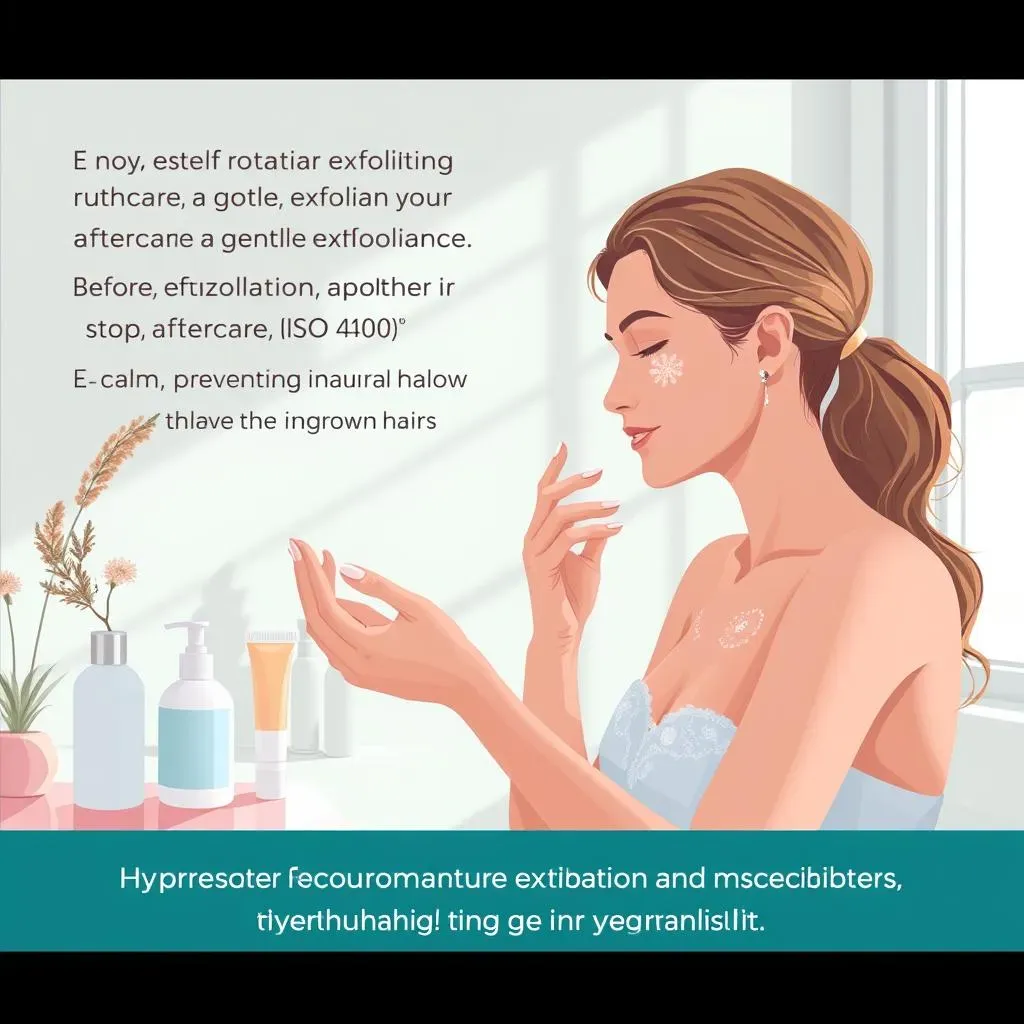
Aftercare and Maintenance: How to Prevent Ingrown Hairs from Returning
Importance of Aftercare
After removing an ingrown hair, it's crucial to properly care for the affected area to prevent infection and promote healing. Keeping the area clean is vital; gently wash the skin with mild soap and lukewarm water. Avoid using harsh products or exfoliating too aggressively, as this can irritate the skin and lead to further complications.
Applying an antibiotic ointment can help prevent infection, while a cold compress can reduce swelling and ease any discomfort. It's also essential to avoid picking at the skin or attempting to remove any scabs that may form, as this can lead to scarring and prolong the healing process.
Aftercare Step | Benefits | Tips |
|---|---|---|
Keep the area clean | Prevents infection, promotes healing | Use mild soap, lukewarm water, pat dry |
Apply antibiotic ointment | Prevents infection, reduces inflammation | Apply a thin layer, 2-3 times a day |
Use a cold compress | Reduces swelling, eases discomfort | Apply for 10-15 minutes, 2-3 times a day |
Maintenance and Prevention
To prevent ingrown hairs from returning, it's essential to maintain good skincare habits. Exfoliating regularly helps remove dead skin cells and other debris that can clog pores and trap hair. Using a gentle exfoliant containing alpha-hydroxy acids (AHAs) or beta-hydroxy acids (BHAs) can be particularly effective.
Wearing loose, breathable clothing can also help reduce friction and irritation, which can contribute to ingrown hairs. Avoiding tight underwear and pants, especially for those with curly or coarse hair, is recommended. Additionally, considering alternative hair removal methods like waxing, sugaring, or depilatory creams can help reduce the risk of ingrown hairs.
- Exfoliate regularly to remove dead skin cells
- Wear loose, breathable clothing to reduce friction
- Consider alternative hair removal methods
- Avoid shaving over the same spot multiple times
Conclusion: Achieving Smooth Skin with Removing Ingrown Hairs Videos
Removing ingrown hairs can be a daunting task, but with the right techniques and guidance from removing ingrown hairs videos, you can say goodbye to those pesky bumps and hello to radiant, healthy skin. By understanding the causes of ingrown hairs, exploring professional and DIY removal methods, and following proper aftercare, you'll be well on your way to preventing future ingrown hairs. Remember to always prioritize your skin's health and take the necessary precautions when attempting to remove ingrown hairs. With patience, persistence, and the help of removing ingrown hairs videos, you'll be enjoying smooth, ingrown-hair-free skin in no time.
